Table of contents
General considerations about the constellations of the signs
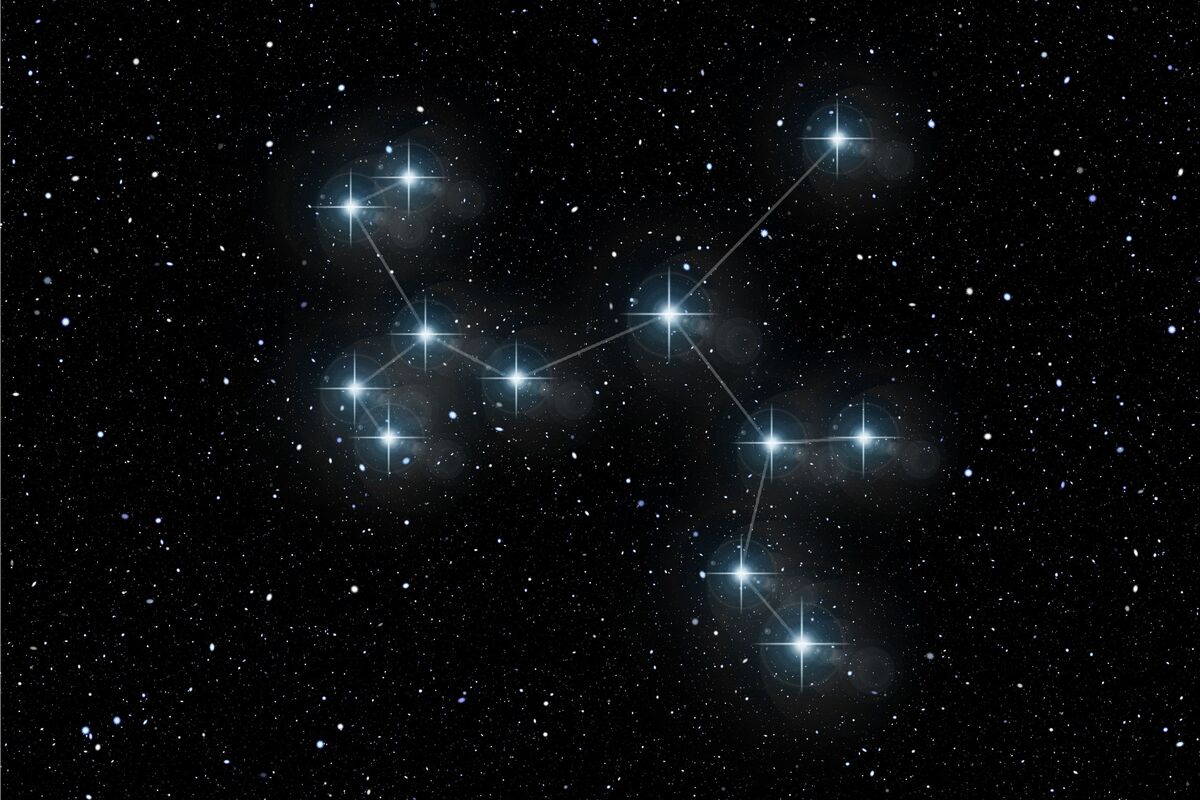
In total, there are 12 constellations that lie along the ecliptic, which is the path that the Sun makes during a year. These were called the constellations of the zodiac, a term that comes from the Greek ζωδιακός κύκλος "zōdiakós kýklos", which, translated into Portuguese, is "circle of animals".
Each of these divisions represents a different constellation in astronomy, and in astrology it is a different sign. Each time the sun makes its way along the ecliptic, it falls on one of these constellations, and, according to astrology, each period in which the sun reaches one of them implies that those born on those days are ruled by that particular constellation.
So, each of these constellations have very ancient origins, before they were officially catalogued by the Greek astronomer Ptolemy. In this article, we will learn about their origins and the myths that surround each of them!
The Constellation of Aries
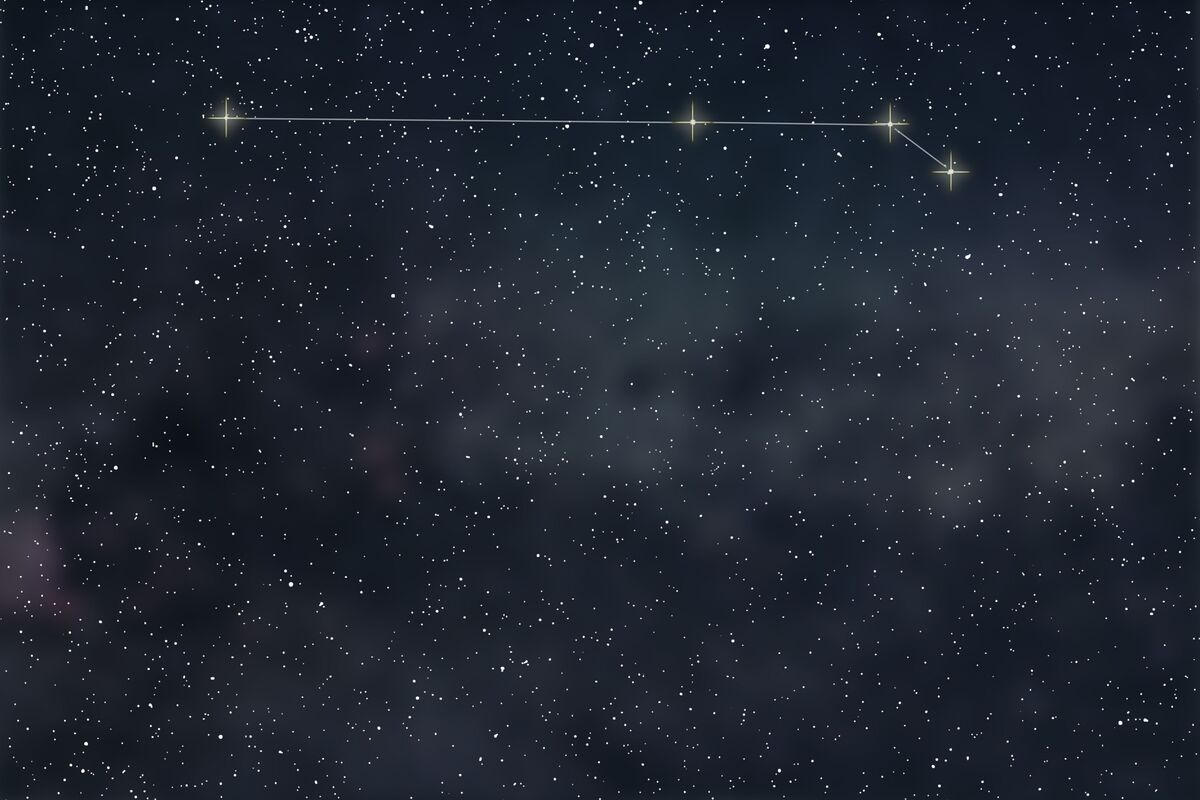
The constellation of Aries, the ram, ranks 39th in size among all 88 existing constellations. Its location is in the northern hemisphere, between the constellation of Pisces and the constellation of Taurus.
In addition, it is the constellation that governs those born between March 21 and April 19, people who develop remarkable characteristics, such as courage, perseverance and willingness. Next, check out more about this constellation and its individuals!
Curiosities and origin of the constellation Aries
The origin of the constellation of Aries dates back a long time, being discovered and catalogued by the Greek astronomer and scientist Ptolemy in the mid 2nd century. However, its officialization was only known by the astronomical union in 1922.
Although it has few stars and sky objects near it, several meteor showers can be observed, occurring in certain times of the year. Among them are the May Arietids, Autumn Arietids, Delta Arietids, Epsilon Arietids, Daytime Arietids and Ariete-Triangulidi (also called Aries Triangulids).
Celestial objects from the constellation Aries
The constellation of Aries has four celestial objects: the spiral galaxy NGC 772, NGC 972 and the irregular dwarf galaxy NGC 1156. Its brightest object is called Hamal (Alpha Arietis), which is an orange giant star and about twice as big as the sun itself. Therefore, it is considered the 47th brightest star in the sky.
In addition, the name Hamal is derived from the Arabic name assigned to the constellation Al Hamal (lamb or ram). Because of the ambiguity between the name of the star and the constellation, it is also known as راس حمل "rās al-ħamal" (ram's head).
Aries Constellation and Mythology
In Greek mythology, the constellation of Aries comes from the myth of the flying ram whose wool is formed by golden threads that saves Phrixus, the son of the king of Thebes, Atamas, with Nefele.
It all starts with her stepmother Ino, who, to protect her own children, tries to murder the children of her husband's first marriage. She hatches a plan to have Frixo sacrificed to Zeus on account of the crop that was a failure, but, in fact, it was Ino herself who had sabotaged the plantation.
Thus, Nefele ends up winning the golden animal from Hermes, causing the latter to flee with Phrixus and his sister, Hele, hanging on his back. However, Hele falls into the sea in the region called Helesponto. The ram then arrives in Colchida and is then sacrificed in gratitude to its king, Aeetes, to whom it gives its golden wool and ends up marrying his daughter, Calliope.
Meanwhile, Pelias eventually becomes king of Iolco, but he hears a terrible prophecy that says he would be killed by his own nephew Jason. Fearing the prophecy, Pelias challenges Jason to get the Golden Fleece in Colchis in exchange for revoking the throne to which he was entitled. This is a seemingly impossible task, but Jason is undeterred.
So he ends up building the ship Argo and gathers a troop of fearless heroes with her, known as the Argonauts. Together, they set sail for Colchis.
Arriving at the kingdom, he is challenged by King Eetes to accomplish several difficult tasks in order to get the Velocino. Among them, plowing the field with fire-spitting bulls, sowing the teeth of a dragon in the field, and then fighting the army that was born through those teeth and getting past the guardian dragon of the golden skin.
Jason heroically obtains the Velocus and flees with Medea, the daughter of Aeetes. On the way home, Medea plots the death of King Pelias and, by doing so, ends up completing the prophecy. The gods, surprised by such a feat, raise the Velocus to the heavens, making it the famous Aries constellation of the present day.
The Constellation of Taurus

The constellation of Taurus dates back a long time and, like the other constellations that make up the zodiac, it is located in the Ecliptic. Due to its position and its extremely bright stars, it is quite easy to spot.
It lies in the middle of the constellations Aries and Gemini and is located in the northern hemisphere, occupying position 17 in relation to its size, among all the 88 constellations. In addition, it is the constellation that governs those born between April 21 and May 20, people known for their stubbornness, their caprice and their zeal. Check more below!
Facts about the constellation Taurus
The constellation of Taurus, also known as Taurus, is made up of several bright stars. These include the Hyades and Pleiades, also known as the 'seven sisters', the star Aldebaran and the Crab Nebula.
The first considerations about this conglomeration of stars comes from the Babylonians, around 4000 years ago, at the time when the Pleiades appeared on the horizon in the morning and with the arrival of spring.
How to locate the constellation Taurus
A very easy constellation to find is Taurus, mainly because the stars that compose it are very bright, besides the fact that it is close to the constellation Orion. That is, you can identify it based on the location of the famous Three Marys.
In Brazil, the constellation of Taurus can be best observed from the east during summer, since at that time its stars reach their maximum brightness. It rises in the east, at 6 p.m., and is visible during the whole night period.
Celestial objects from the constellation Taurus
The constellation of Taurus consists of the following celestial objects: the star Aldebaran, known as the Alpha of Taurus, Alnath, the Beta of Taurus, Hyadum I, the Gamma of Taurus and the Taurus Theta. Near the Taurus Theta, we have the Crab Nebula, which is the result of a Supernova - the death of a massive star, which exploded and released a large amount of energy.
In addition, this constellation also has two star clusters, the Hyades and the Pleiades. The Hyades are very close to the Pleiades and are an open cluster whose stars form a "V" around the giant Aldebaran.
In mythology, the Hyades were half sisters of the Pleiades, and upon the death of their brother Hyas, they cried so much that they eventually died of grief. Zeus took pity on the sisters and turned them into stars, placing them right on top of the head of the constellation Taurus.
The Pleiades, meanwhile, are the brightest group of stars in the entire sky and are also known as the 'seven sisters'. This conglomeration of stars has 500 in total, but the best known are seven of them. Their names are Merope, Maia, Alcione, Asterope, Electra, Taigete and Celene.
Thus, in Greek mythology, the Pleiades were seven sisters, daughters of Pleione and Atlas. They were successively pursued by Orion, who was bewitched by the beauty of the girls. Tired with such persecution, they decided to ask the gods for help, which transformed them into the stars that make up the constellation of Taurus.
Taurus Constellation and Mythology
In Greek mythology, the constellation Taurus has its own story. There was a kingdom called Tyre, and its king Agenor had a daughter of such beauty named Europa. Zeus had fallen madly in love with the mortal woman and was determined to possess her, whatever the cost.
However, he decided to metamorphose into some other form in order to meet Europa, so that this would throw off the jealousy of his wife, Hera. Finally, he decided to transform into a great white bull and went towards the beach of Tyre, where there was a group of young girls bathing. Among them was Europa.
The other girls were frightened by the coming animal, but not Europa. She approached Zeus in the form of a bull and stroked his fur, making a garland of flowers to place on him. Upon seeing this scene, the other girls tried to approach as well, but the bull got up and galloped off toward the sea, with Europa on his back.
The girl tried to call for help, but it was too late. The animal galloped through night and day, until it finally stopped on a Crete beach, letting Europa get off its back. Zeus then assumed his true form and joined Europa, having three sons with her: Minos, Radamanto and Sarpedon.
Upon Europa's death, she was considered a deity on the island, causing the bull that carried her on its back to become a constellation in the sky.
The Gemini Constellation
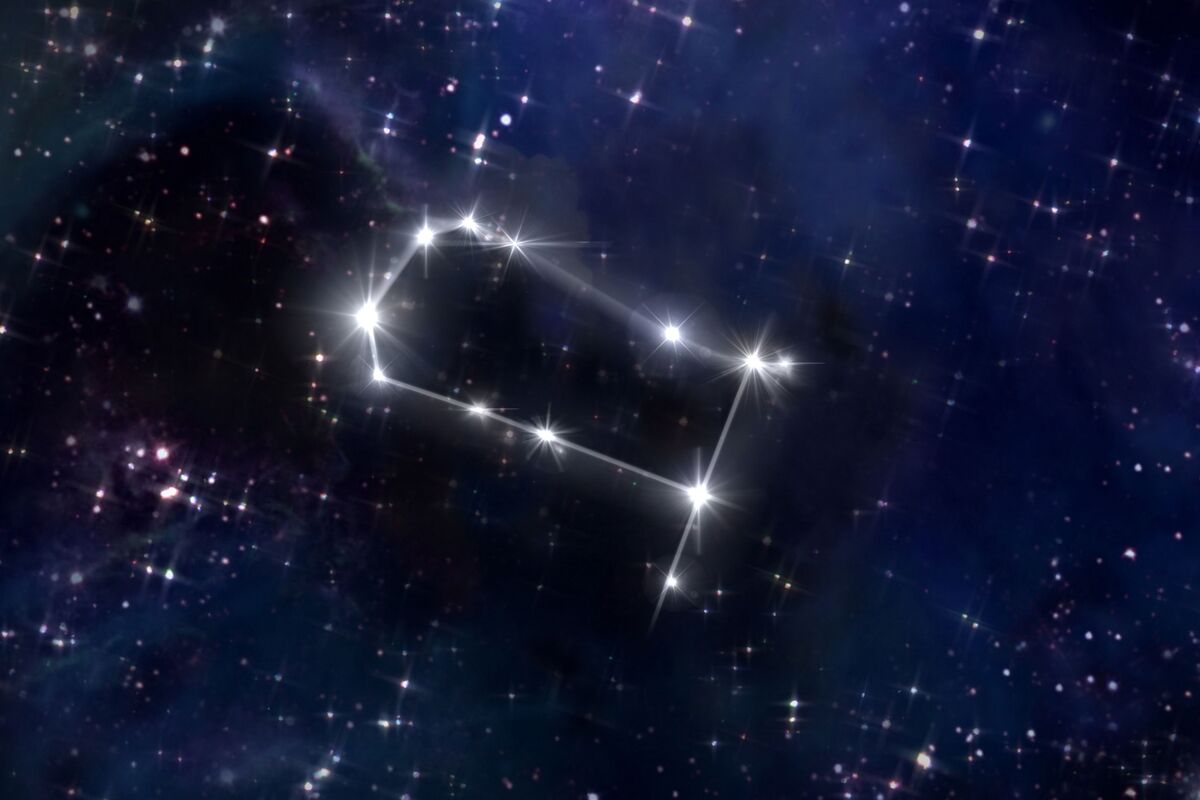
The constellation of Gemini is located in the equatorial zone between the constellations Taurus and Cancer. It is considered the 30th largest constellation among the 88 and also has its origin dated many centuries ago, being discovered by the astronomer Ptolemy in the second century.
She rules those born between May 21 and June 20, natives who overflow with characteristics like communication and persuasion. Check out more details below!
How to locate the constellation Gemini
The constellation of Gemini is best seen in early winter in the northern hemisphere. To find it most easily, look for its two brightest stars, Castor and Pollux, starting in Orion's belt, more popularly known as the Three Marias.
Then, draw a straight line to the star Betelguese, the second brightest star in the constellation Orion, and you will be able to locate the constellation Gemini.
Celestial objects from the constellation Gemini
The main stars of the constellation of Gemini are Castor and Pollux, respectively alpha and beta of Gemini. Pollux is considered the brightest star in the constellation and is the 17th brightest in the sky, possessing twice the mass and nine times the radius of the sun.
Meanwhile, Castor is a multiple star system, meaning it has six interconnected elements and is considered the 44th brightest star in the sky. In this constellation, we can also find Messier 35, which is a star cluster, Geminga, a neutron star, and the Eskimo Nebula.
Gemini Constellation and Mythology
In Greek mythology, the constellation of Gemini has an origin. The story tells that the brothers Castor and Pollux were also brothers of Helen of Troy. Their origins were through Zeus, who was in love with Leda, the wife of Tyndareus, the king of Sparta.
To get closer to her and not raise evidence of his jealous wife, Hera, Zeus transformed into a beautiful swan. Thus, the fruit of this passion ended up giving birth to Castor and Pollux, being Castor mortal and Pollux immortal. Both grew up having the best education, and Castor became a great gentleman and Pollux, a great warrior.
One day, the brothers decided to challenge two young men for the hand of two girls who were already promised. However, during the battle, Castor ended up being killed. Pollux became desperate and tried to kill himself, to find his dead brother, which was in vain, because he was immortal. Zeus, then, seeing his son's despair and sadness, ended up immortalizing both in the constellation of Gemini.
In Egypt, this constellation referred to the god Horus, being an old Horus and a younger Horus.
The Cancer Constellation
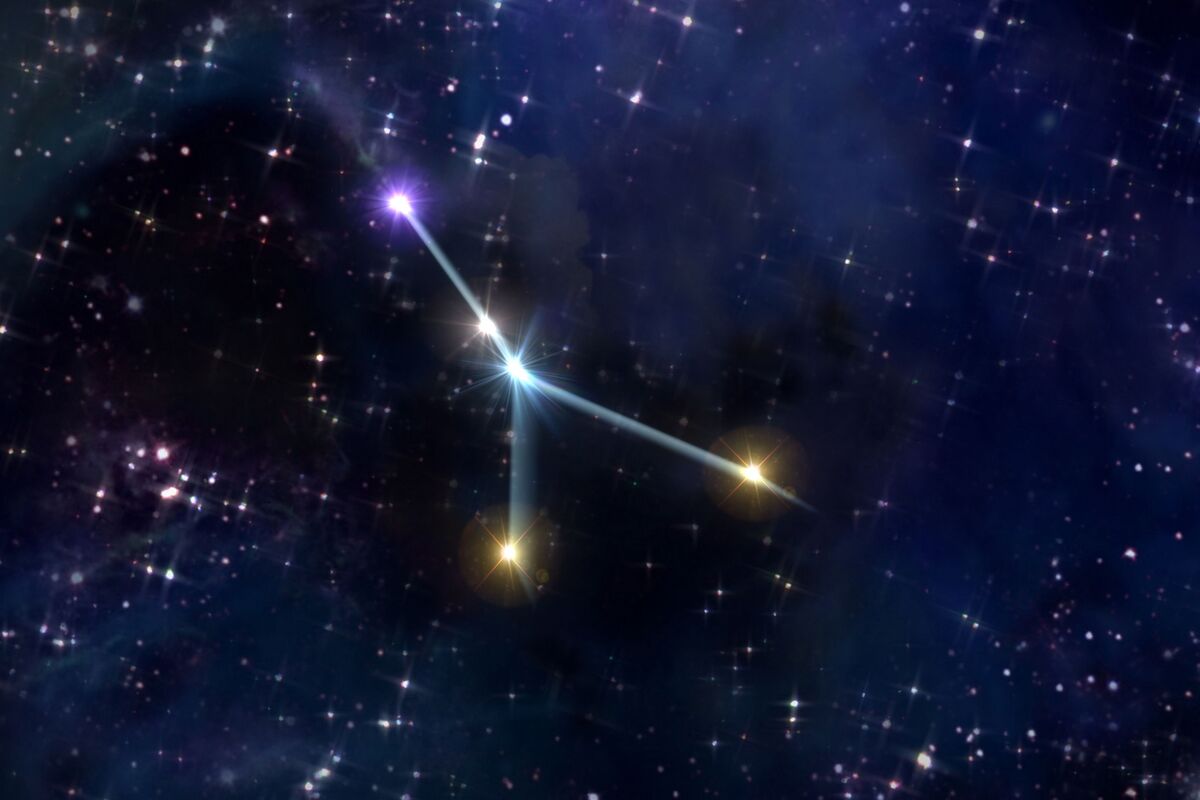
The constellation of Cancer, or Crab, is located in the northern hemisphere, and although its stars are dimly shining and very difficult to locate with the naked eye, it is a constellation of great importance. It lies in the middle between the constellations Gemini and Leo.
In cartography, we have the Tropic of Cancer, where an imaginary line is used to demarcate the northern equatorial and subequatorial zones, and passes exactly over the constellation of Cancer.
The Sun, when it reaches this tropic with its vertical axis, causes the change of seasons, occurring summer in the northern hemisphere and winter in the southern. Thus, this constellation governs those born between June 21 and July 21. In general, these people have as outstanding characteristics sensitivity and manipulation.
History of the Cancer Constellation
In its history, the constellation of Cancer was first discovered by Ptolemy in the 2nd century BC through the Almagest, a mathematical and astronomical treatise containing a large star catalogue. As the constellation appeared to have crab legs, it was named "Karkinos" (crab in Greek).
In Egyptian records dating back to 2000 BC, the constellation of Cancer was described as Scarabeus (scarab beetle), an important emblem symbolizing immortality. In Babylon, it was called MUL.AL.LUL, which refers to both a crab and a grabbing turtle.
In addition, the constellation in Babylon had a strong connection with the ideas of death and passage to the world of the dead. Later, this same idea gave rise to the myth of Hercules and the Hydra in Greek mythology.
Celestial objects from the constellation Cancer
The constellation of Cancer is made up of the following stars: Al Tarf (Beta Cancri), the brightest star in the constellation; Assellus Australis (Delta Cancri), a giant and the second brightest star; Acubens (Alpha Cancri), whose name comes from Arabic and means pincers or claws; Assellus Borealis (Ypsilon Cancri) and Iota Cancri.
In addition, Cancer is also home to Messier 44, a cluster that lies right in the center of the constellation; Messier 67, another star conglomerate; QSO J0842 + 1835, a "quasar" an active galactic nucleus, and OJ 287, which is another type of active galactic nucleus.
Cancer Constellation and Mythology
Cancer and its constellation have their history in Greek mythology. In it, Hera was very jealous of Hercules, son of Zeus and fruit of a relationship with a common human.
In order to end his life, she challenged him to defeat several monsters and creatures of his creation, highlighting, among them, the famous Lernaean Hydra, a monster that had the body of a dragon and the heads of a serpent that, when one was cut, two would regenerate in its place.
So when she realized that the demigod would kill the monster, Hera sent a monster crab, but Hercules stepped on it. Recognizing the animal's effort, Hera turned it into the constellation of Cancer.
In this way, the constellation of Cancer is precisely close to that of Hydra, because of this myth.
The Constellation of Leo
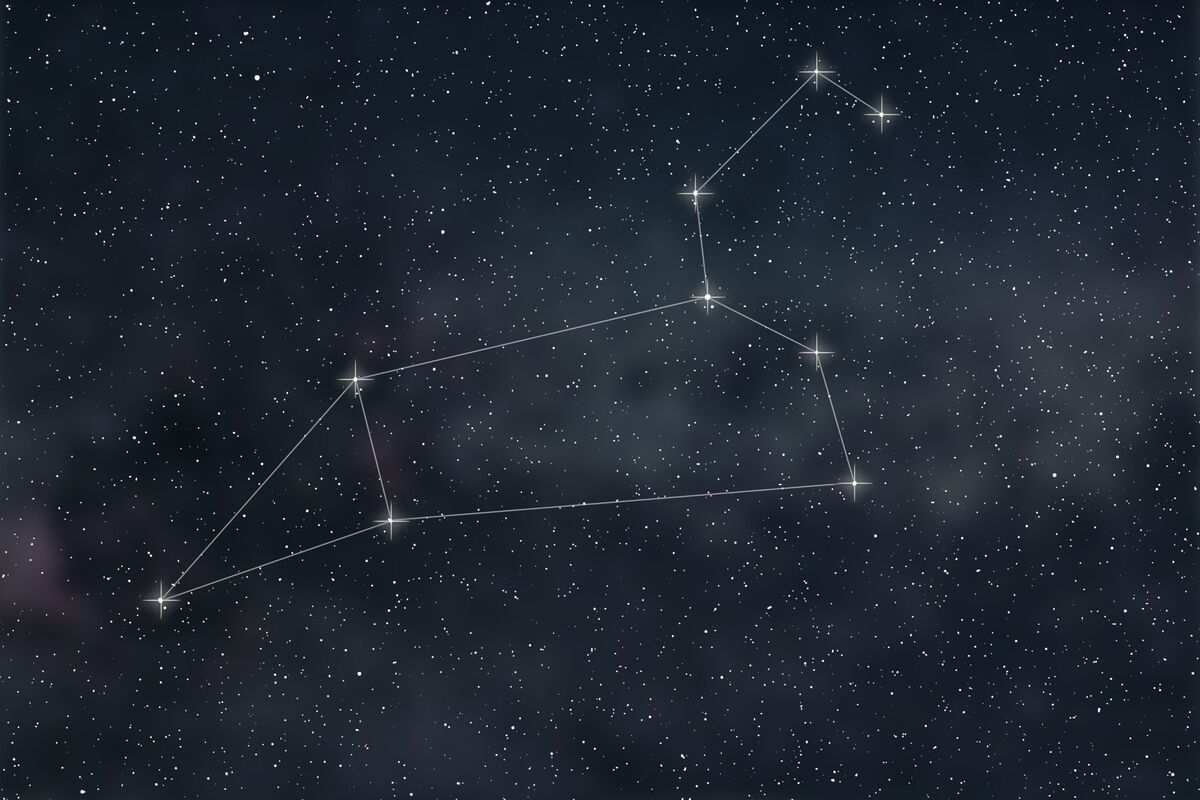
The constellation of Leo, also known as Leo, has very bright stars in its cluster, so its location in the sky is not so difficult. It lies in the equatorial zone and is considered the 12th largest constellation among the 88 catalogued. Its location is close to the constellations of Cancer and Virgo.
The period in which the sun passes through the constellation, between July 22 and August 22, makes the natives of this sign people of strong characteristics, full of bravery and vanity. Check out more details in the topics below!
Facts and curiosities about the constellation Leo
The constellation of Leo was one of the first known, having evidence of its discovery at the time of Mesopotamia, around the year 4000 BC. At that time, his people had a constellation similar to the one we know today.
The Persians called this constellation Leo Ser or Shir, but the Turks called it Artan, the Syrians Aryo, the Jews Arye, and the natives Simha. However, all these names had the same meaning: lion.
In Babylonian astronomy, the constellation of Leo was called UR.GU.LA, "The great lion". As its main star, Regulus, was located in its chest, it was called the king star. In Asia, this constellation has a direct relationship with the Sun, because when it appeared over the sky, it was a sign that the summer solstice would begin.
How to locate the constellation Leo
Locating the constellation of Leo is quite easy, due to the enormous brightness of its stars. Try to take as a reference its bright main star, Regulus. Near Leo, there are other constellations that can be seen around it, such as Hydra, Sextant, Bowl, Leo the Lesser and Ursa Minor.
Celestial objects from the constellation Leo
The constellation of Leo is composed of several stars, and it is no wonder that it is one of the largest constellations that exist. Among its main constellations, we have the brightest, Regulus (Alpha Leonis), whose name comes from Latin and means "prince" or "little king".
We also have Denebola (Beta Leonis), whose name is derived from Deneb Alased, which comes from Arabic ذنب الاسد (ðanab al-asad) and means "lion's tail", precisely because of its position in the constellation; Algieba (Gamma Leonis) or Al Gieba, which also comes from Arabic الجبهة ( Al-Jabhah) and is translated as "forehead".
Finally, we have Zosma (Delta Leonis), Epsilon Leonis, Zeta Leonis, Iota Leonis, Tau Leonis, 54 Leonis, Mu Leonis, Thata Leonis and Wolf 359 (CN Leonis).
In addition, this constellation is also home to several galaxies, including Messier 65, Messier 66, NGC 3628, Messier 95, Messier 96, and Messier 105. The first three are also known as the Lion Trio.
Constellation of Leo and Mythology
In Greek mythology, the appearance of the constellation Leo is linked to the twelve labors of Hercules. There was a terrible lion that roamed the city of Nemeia, whose skin was so tough that no existing weapon could pierce it. The animal continued to cause panic among its inhabitants, since no one could kill the beast.
Hercules was then called upon to finish off the feline, and after many days of hand-to-hand combat, he managed to strike his club into it, knocking the animal unconscious and suffocating it. Using the animal's own claws, he extracted its impenetrable hide. Hera, seeing how bravely the lion had fought, transformed it into the constellation of Leo in the heavens.
In Sumerian mythology, the constellation of Leo represented the monster Humbaba, whose face is similar to that of a lion.
The Constellation of Virgo

The constellation of Virgo, also known as Virgo, is one of the first of the zodiac to be identified, and its origin comes from remote times. Of the 88 existing constellations, it is the second largest, second only to Hydra.
Virgo lies between the constellations Leo and Libra and is found in the southern hemisphere. The sun always passes through the area of this constellation in the period between August 23rd to September 22nd. Those born on these days are very methodical and rational people. Follow the topics below and learn more!
History of the constellation of Virgo
The myths that reflect on the history and emergence of the constellation of Virgo are several. But, most probably, the best known myth about Virgo is located in Greek mythology. This tells the story of Astreia, daughter of Zeus with Themis, the goddess of justice.
For a long time, the young woman tried to implant the ideas of peace and honesty among men. However, it seemed that no one was interested in these matters, they only wanted to know about war and violence. Astreia was exhausted from continuing in an environment full of conflict and blood and decided to return to the heavens, becoming the constellation of Virgo that we know.
Characteristics and curiosities about the constellation of Virgo
The constellation of Virgo was one of the first to receive this name, and whatever the mythology, it has always been represented by a maiden - hence the name Virgo.
In MUL.APINm the Babylonian compendium of astrology dating from the 10th century BC, the constellation of Virgo was referred to as the "Furrow" representing the goddess of grain, Shala, with an ear of corn. One of the stars belonging to this constellation is called Spica and comes from the Latin "ear of grain". Because of this fact, it is associated with fertility.
In the vision of Hipparchus, a Greek astronomer born in 190 BC, the constellation of Virgo has correspondence to the two Babylonian constellations, the "Furrow" in its eastern sector and the "Fronda of Erua" in its western art. The latter is represented by a goddess holding a palm leaf.
In Greek astronomy, this Babylonian constellation was associated with the goddess of agriculture Demeter, while the Romans related it to the goddess Ceres. During the Middle Ages, the constellation of Virgo was closely related to the Virgin Mary, mother of Jesus.
How to locate the constellation of Virgo
The constellation of Virgo is visible during autumn in the southern hemisphere. Although its stars are not so bright, you can try to locate it by taking the constellation of Leo as a reference. Besides Leo, it is also close to the constellations of Libra, Bowl, Berenice's Wig and Snake.
Its brightest star, Spica, is the easiest to spot: Just follow the curve of the Big Dipper towards the constellation of Böötes and, passing its star, Arcturus, you will be close to finding Spica.
Celestial objects from the constellation Virgo
The constellation of Virgo consists of several stars, the most important of which are:
- Spica (Alpha Virginis), its brightest star;
- Porrima (Gamma Virginis), Zavijava (Beta Virginis), whose name comes from the Arabic زاوية العواء (zāwiyat al-cawwa) and means "song of the bark";
- Auva (Delta Virginis), from Arabic من العواء (min al-ʽawwā), meaning "in the lunar mansion of Awwa";
- Vindemiatrix (Epsilon Virginis), which comes from the Greek and means "the grape picker".
Between the constellations of Virgo and Berenice's Hair, there are approximately 13000 galaxies, and this region is called the Virgo Superaglomerate. Among these objects, we can highlight M49, M58, M59 and M87. There is also the Shade Galaxy, whose shape resembles a Mexican hat. There is also the existence of a quasar, 3C273 Virginis, located three billion light-years away.
The Constellation of Libra

The constellation of Libra occupies the 29th position in size among all 88 catalogued constellations, but its stars have a very weak luminosity. It is located in the equatorial zone, between the constellations of Virgo and Scorpio.
This constellation governs those who are born between September 23 and October 22. They are people with a character full of justice, but sometimes they can be uncertain about their choices. Check more details below!
History of the Constellation of Libra
The history of the constellation of Libra is linked to the myth of Astreia, the goddess of justice and the constellation of Virgo. As soon as the young woman returns to heaven, after a failed attempt to bring peace to mortals, she becomes the constellation of Virgo. The same happened with the scales she carried, this being the symbol of justice, which ends up becoming the constellation of Libra.
In Babylonian astronomy, it was known as MUL Zibanu (scales or balance), also called "Scorpion's Claws". In Ancient Greece, the scale also came to be known as "Scorpion's Claws" and from that time on it became a symbol of justice and truth.
Interestingly, until the 1st century BC, the constellation of Libra was part of that of Scorpio, but later gained its independence.
How to locate the constellation of Libra
The constellation of Libra can be located in the equatorial zone and should be seen in any corner of the Earth, depending on the time of the year. In the southern hemisphere, it can be seen in the period between August and December. To find it, use the star Antares (Scorpio's main star) as a reference. Follow the prolongation of this star and you will arrive near the constellation of Libra.
Celestial objects from the constellation Libra
The stars of the constellation of Libra are of not so expressive magnitude, being only two that have more brightness among all. We have Zubenelgenubi (Alpha Librae), which means "southern claw" in Arabic, Zubeneschamali (Beta Librae), the "northern claw", and, finally, Zubenelakrab (Gamma Librae), the "scorpion claw".
There's also the globular cluster NGC 5897, a loose cluster of stars that lies 50,000 light-years from Earth.
The Constellation of Scorpio
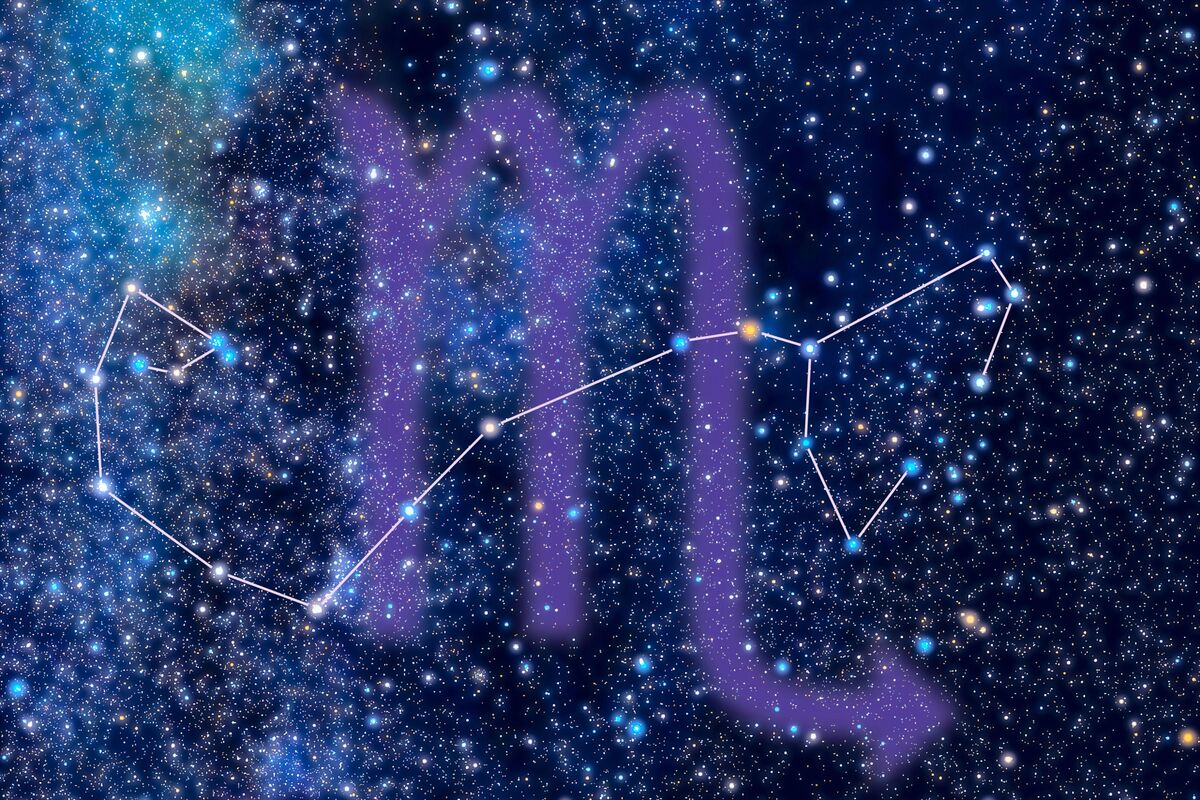
The constellation of Scorpio, or Scorpius, is located in the southern hemisphere, right in the center of the Milky Way. It is the 33rd largest constellation among all those ever catalogued and lies between the constellations of Libra and Sagittarius.
It is one of the 48 constellations catalogued by Ptolemy in the second century B.C. The Sun's path through this constellation occurs between October 23rd and November 21st. Those born on these days are very seductive and intense people. You can see more about this star cluster below!
History of the Constellation of Scorpio
The origin myth of the constellation of Scorpio comes from Greek mythology, in which Orion, a giant hunter, kept boasting to the goddess Artemis, saying that he would hunt all existing animals. Artemis and her mother, Leto, decided to send a giant scorpion to kill the hunter, which ended up taking his life, causing Zeus to transform both into constellations.
Another version of this legend is that Artemis' twin brother, Apollo, was the one who sent the poisonous animal to kill Orion, because he was jealous of the giant, since he was Artemis' best hunter and companion.
Orion and the beast fought a brutal battle, but the hunter's blows had no effect on the scorpion. Sensing that he could not win the fight, he fled into the sea, where the scorpion could not follow.
Meanwhile, Apollo teased his sister, saying that she was mediocre with the bow and arrow, challenging her to hit that shadow that was swimming over the sea. Artemis didn't hesitate and shot with great aim at the shadow, but she had hit it precisely over her partner's skull.
With her beloved's body over her arms, she asked Zeus to turn him into a constellation and stand next to her dog, the star Sirius.
Nowadays, we can see the constellation of Orion together with the constellation of Lesser Dog, whose brightest star is Sirius. Orion lies well ahead of the constellation of Scorpio, as if it were running away from it, as in the myth.
How to locate the constellation of Scorpio
Because it is located in the southern hemisphere and right in the middle of the Milky Way, the constellation of Scorpio can be easily found. In Brazil, it can be seen during autumn and winter. Another factor that makes it easy to find it is its main stars that, aligned, end up making the shape of a scorpion's tail.
Celestial objects from the constellation Scorpio
Among the stars in the constellation of Scorpio, we can highlight the two most important. The first is Antares (Alpha Scorpii), a red supergiant that is considered the 16th largest star in the entire sky. Its name derives from the Greek Ἀντάρης, "rival of Ares", due to its colour being similar to the planet Mars.
There is also Shaula (Lambda Scorpii), its second brightest star in the constellation of Scorpio and the 25th brightest among all existing stars. While Antares is at the heart of the constellation, Shaula is located in its sting.
There are other celestial objects that stand out within this constellation, such as NGC 6475, which is a star cluster; NGC 6231, another star cluster that lies near the Milky Way; M80, a very bright small globular cluster, and Scorpius X-1, a dwarf star.
The stars of the Brazilian flag
The stars that make up the famous Brazilian flag not only represent the states, but are also representations of various constellations. Interestingly most of these stars that represent the Brazilian states come from the constellation of Scorpio.
Let's check, now, each of these stars and their corresponding state:
- Antares- Piauí;
- Graffias - Maranhão;
- Wei- Ceará;
- Shaula - Rio Grande do Norte;
- Girtab - Paraíba;
- Denebakrab - Pernambuco;
- Sargas - Alagoas;
- Apollyon - Sergipe.
The Constellation of Sagittarius
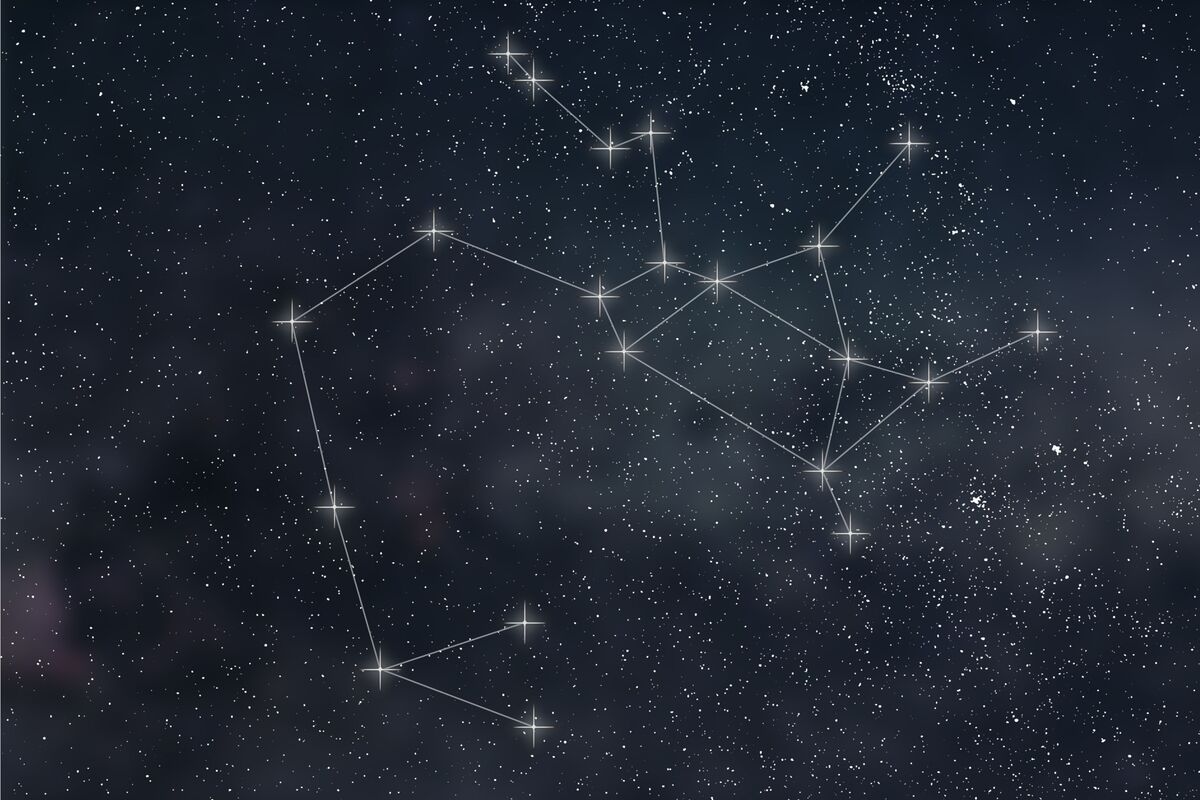
The constellation Sagittarius is located in the equatorial zone and in the center of the Milky Way. It lies between the constellations of Scorpio and Capricorn and is in the top 15 largest catalogued constellations.
It is one of the 48 listed by the astronomer Ptolemy, and its name comes from Latin, which translation means "archer". Its constellation represents a centaur wielding a bow and arrow, and its sign rules those born between November 22 and December 21, intuitive and sincere people.
To learn more, keep reading the article!
History of the constellation Sagittarius
In Greek mythology, the myth of Sagittarius comes from Chiron, son of the god of time, Cronos, with the nymph Filira. Chiron is a hybrid of horse and human, since Cronos had metamorphosed into a horse when he went to meet Filira.
Chiron spent much of his life in a cave on Mount Pelion, where he ended up studying and teaching the arts of botany, astronomy, music, hunting, warfare, and medicine. Hercules eventually became one of his apprentices, but one day, while chasing the centaur Elatos, he accidentally shot a poisoned arrow at Chiron.
Thus, the centaur felt horrible pain, but he couldn't die. Unable to bear such suffering, Chiron asked Zeus to transfer his immortality to Prometheus, and then he ended up becoming one of the several constellations in the sky, Sagittarius.
In Sumer, Sagittarius was considered an archer god who was half human and half horse. Among the Persians, this constellation was named Kaman and Nimasp.
How to locate the constellation Sagittarius
Because of its inconspicuous shape, the constellation of Sagittarius is not so easy to identify. It is located in the equatorial zone and can be visible during the autumn and winter months.
To locate it, use the constellation of Scorpio as a reference, preferably the part of its sting, which is near the arrow part of Sagittarius.
Celestial objects from the constellation Sagittarius
The brightest stars of Sagittarius form the asterism (stars that can be seen with the naked eye) known as the Bule. Its main ones are Kaus Australis (Epsilon Sagittari), its brightest star, and Nunki (Sigma Sagittarii), whose name is of Babylonian origin but of uncertain meaning.
In addition, this constellation is also known for its large number of nebulae. Among them are M8 (Lagoon Nebula), M17 (Omega Nebula) and M20 (Trypid Nebula).
The constellation of Capricorn
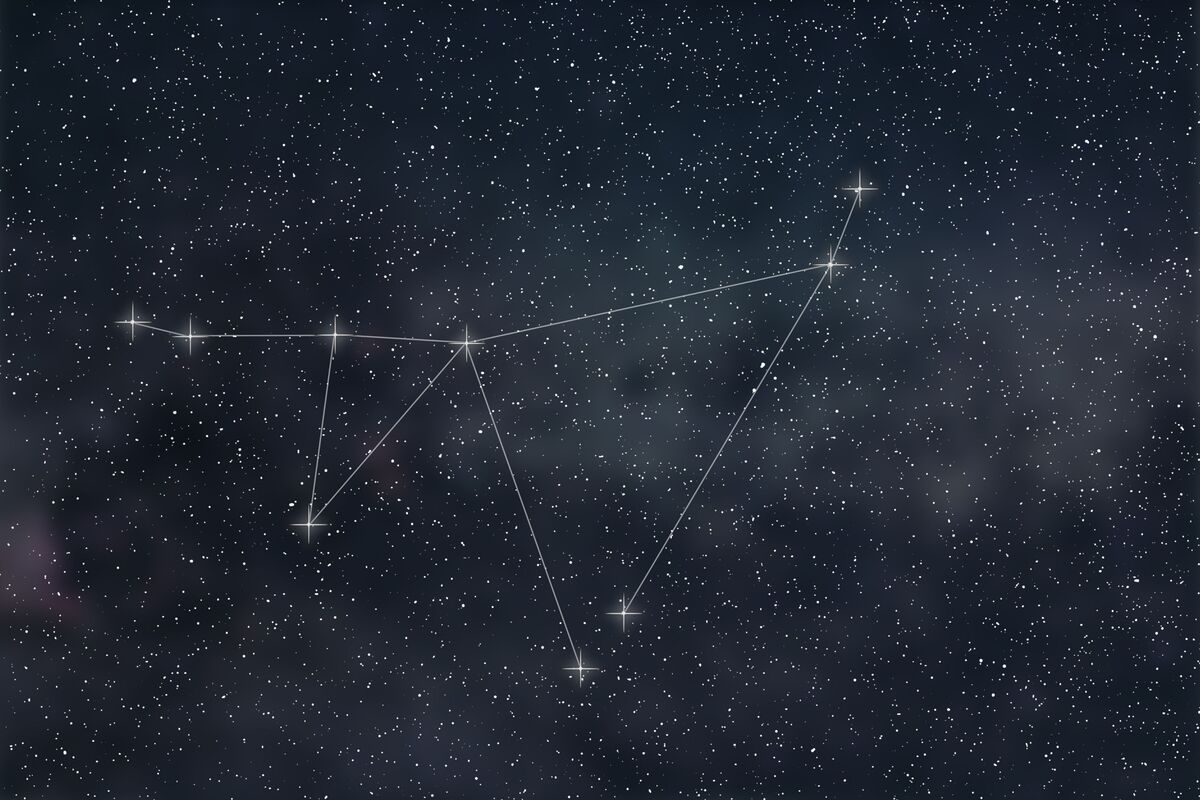
The constellation of Capricorn is one of 48 listed by the Greek astronomer Ptolemy. Its name comes from the Latin Capricornus and means "horned goat" or "horned goat". It lies between the constellations of Sagittarius and Aquarius and represents a creature that is half goat and half fish.
As well as the Tropic of Cancer, there is the Tropic of Capricorn, being the constellation that is used to indicate the solstice position and the latitude of the position south of the sun. This term is also used for the line on Earth when the sun appears during midday on December solstice days.
Those who are ruled by this constellation are born during December 22 to January 21. They are people who, despite their coldness, are very efficient at what they do. You can see this and more about the constellation of Capricorn below!
History of the Constellation of Capricorn
The story surrounding the constellation of Capricorn correlates with the god Pan of Greek mythology. Pan possessed the human body, but had horns and goat feet. One day on Olympus, the god warned everyone that they would be under attack by the Titans and various monsters.
As this conflict was occurring, Pan entered a river, aiming to transform himself into a fish, but fear caused his transformation to be cut short, becoming a creature half goat and half fish. With the victory of Olympus, Pan was eternalized as the constellation of Capricorn for his deeds.
Another version of this myth tells about the birth of Zeus, in which his mother, Reia, afraid of seeing her son devoured by her own father, Cronos, took him to a distant island. There, Zeus was fed with the milk of a goat, but ended up accidentally breaking the horns of the animal. In his honor, he ascended the goat as the constellation of Capricorn.
How to locate the constellation of Capricorn
Locating the constellation of Capricorn with the naked eye is a bit tricky, as its stars are quite far from our view and not so bright, so to see it, try to use the constellation of Eagle as a reference, starting from its three bright stars, and then going southwards.
Celestial objects from the constellation Capricorn
In the constellation of Capricorn, we can highlight two very important stars: Algiedi (Alpha Capricorni), whose name comes from the Arabic for "goat" and is the brightest star in the constellation, and Dabih (Beta Capricorni), which also has Arabic nomenclature and means "butcher".
Among its deep sky objects are M 30, a globular group of stars that is very difficult to observe even with small telescopes, and NGC 6907, a spiral galaxy.
The constellation Aquarius

One of the first constellations catalogued by Ptolemy is found in the northern hemisphere and lies next to the constellations of Capricorn and Pisces.
The region where it is located is called "Sea", due to the existence of constellations with aquatic references, such as Cetus (a sea monster from Greek mythology but also known as whale), Pisces and Eridanus, which represents a river.
Its name comes from the Latin word "Aquarius" and means "water bearer" or "cup bearer." Thus, the sun falls in the Aquarius constellation band during the period from January 21 and February 19, and those born on these days are independent and persistent people. Check out more meanings for this constellation below!
Facts and trivia about the constellation Aquarius
In the Babylonian star catalog, the constellation of Aquarius was named GU.LA, "The Great," and depicted the god Ea holding an overflowing vessel. In Babylonian astronomy, Ea was responsible for the 45-day period on each winter solstice, a path that was called the "Path of Ea."
However, the constellation also had a negative connotation, as it was associated with floods among the Babylonians and, in Egypt, it was associated with the flooding of the Nile River, an event that occurred every year. In Greek astronomy, Aquarius was represented as a simple vessel, whose outgoing water formed a stream up to the constellation of Piscis Austrinus, from the Latin "fish of the south".
The constellation of Aquarius is also associated with a meteor shower that occurs between the months of July and August, Delta Aquarids, which launches an average of 20 meteors per hour.
How to locate the constellation of aquarius
The constellation of Aquarius is difficult to locate with the naked eye, since its stars are not very bright. For this, it is necessary to hope that the weather conditions can help at the time of observation of this set. What can be done is to take reference from the constellations closest to it, such as Pisces, Capricorn and Delphinus (Dolphin).
Celestial objects from the constellation Aquarius
Among the stars that make up the constellation of Aquarius, we have Sadalmelik (Alpha Aquarii), which is derived from the Arabic expression سعد الملك "sa'd al-malik", "Luck of the King". Next, we have Sadalsuud (Beta Aquarii), which is derived from the Arabic expression سعد السعود "sa'd al-su'ūd", "Luck of the Fortunes".
Along with Sadalmelik, Sadalsuud is one of the brightest stars in Aquarius and is a yellow super giant, whose luminosity is 2200 greater than that of the sun. Finally, we have Skat (Delta Aquarii), the third brightest star, whose magnitude can be seen with the naked eye. Its name comes from the Arabic الساق "al-sāq" and means "cinnamon".
As for their deep sky objects, we have NGC 7069 and NGC 6981, globular clusters; NGC 6994, a conglomerate of stars; NGC 7009, aka "Saturn Nebula", and NGC 7293, "Helix Nebula". The last two are planetary nebulae, but NGC 7293 is easier to see in a low power telescope.
Aquarius Constellation and Mythology
The legends related to the constellation Aquarius involve the waterman Ganymede, who was a beautiful shepherd, very gentle and handsome, and the gods themselves admired him to the point of giving him ambrosia, the famous nectar of the gods, making him immortal.
The myth tells that while Ganymede was guarding his flock with his dog Argos, the giant eagle, at the behest of Zeus, kidnapped him and took him to the temple of the gods. There, he became their official waterboy.
The shepherd was a person who loved to help others, so he asked Zeus to let him help mortals by offering them water. The god of Olympus was reluctant, but he accepted the request. Ganymede then threw large amounts of water from the sky in the form of rain, and with that, he also became known as the god of rain.
His father, King Trós, always missed his beloved son. Seeing the king's constant suffering, Zeus decided to place Ganymede in the sky as the constellation Aquarius, so that all his longing would be appeased during the nights.
The Constellation of Pisces

The constellation of Pisces is one of the largest existing constellations, being the 14th largest constellation among the 88. Its name comes from Pisces and means "fish" in Latin. As its name implies, this constellation is seen as a pair of fish swimming across the sky. Its location is in the northern hemisphere, between the constellations of Aquarius and Aries.
The sun hits the Ecliptic belt, in which the constellation of Pisces is found during the days of February 19 and March 20. Its natives are very sensitive and empathetic people. Check out the meanings of this constellation below!
Characteristics and curiosities of the constellation Pisces
The constellation of Pisces originates from the Babylonian star composition Šinununutu, the "great swallow," which would be the Western Pisces subdivision, and Anunitum, the "Lady of the sky," equivalent to Northern Pisces. In the records of the Babylonian Astronomical Diaries dating back to 600 BC, this constellation was called DU.NU.NU (Rikis-nu.mi, "string of fish").
In the modern period, in 1690, the astronomer Johannes Hevellus determined the constellation of Pisces to be composed of four different divisions: Pisces Boreus (Northern Fish), Linum Boreum (Northern Strand), Linum Austrinum (Southern Strand) and Pisces Austrinus (Southern Fish).
Currently, Pisces Austrinus is considered a separate independent constellation. The other minors of the Pisces constellation are considered to be descendants of the larger fishes of the Pisces Austrinus constellation.
In 1754, astronomer John Hill proposed cutting off a portion of the southern part of Pisces and turning it into a separate constellation called Testudo, the Latin name for "turtle." However, the proposal was neglected and is now considered obsolete.
How to locate the fish constellation
In its location, the constellation of Pisces is in the same region where other constellations connected to water are, such as Aquarius, Cetus (whale) and Eridanus (river).
In Brazil, its location becomes visible only during late October and early November. After that time, its location becomes very difficult to see. Furthermore, it has the shape of a wide "V", which seems to fit over the "Square of Pegasus" and is part of the constellation Pegasus.
Celestial objects from the constellation Pisces
The stars in the constellation of Pisces are very dimly shining. The main ones are: Arisha(Alpha Piscium), which means "rope" in Arabic and refers to the line formed by the stars near it, Fumalsamakah(Beta Piscium), from the Arabic "fish mouth", and the star of Van Maanen, a white dwarf.
In addition, other celestial objects are M74, a spiral galaxy, NGC 520, a colliding pair of galaxies, and NGC 488, a prototypical spiral galaxy.
Pisces Constellation and Mythology
The myth behind the constellation of Pisces refers to the goddess of love, Aphrodite, and her son Eros, the god of eroticism. Gaia, the goddess personification of Earth, sent her giants and titans to Olympus in order to wage a battle for supremacy of planet Earth.
Many of the gods managed to escape the titans by metamorphosing into animals. Aphrodite and Eros were two of them, who turned into fish and went swimming.
However, the Roman variant of this story has its counterparts Venus and Cupid, who fled on the backs of two fish, later being honored in the constellation of Pisces.
In the Persian astronomer Abd al-Rahman al -Sufi's version of the myth of Aphrodite and Eros, the two tied themselves with a rope so as not to get lost in the Euphrates River. The knot of the rope was marked Alpha Piscium, Arabic for Arisha "the cord," whose name belongs to the brightest star in the constellation of Pisces.
Do the constellations of the signs influence anything in Astrology?
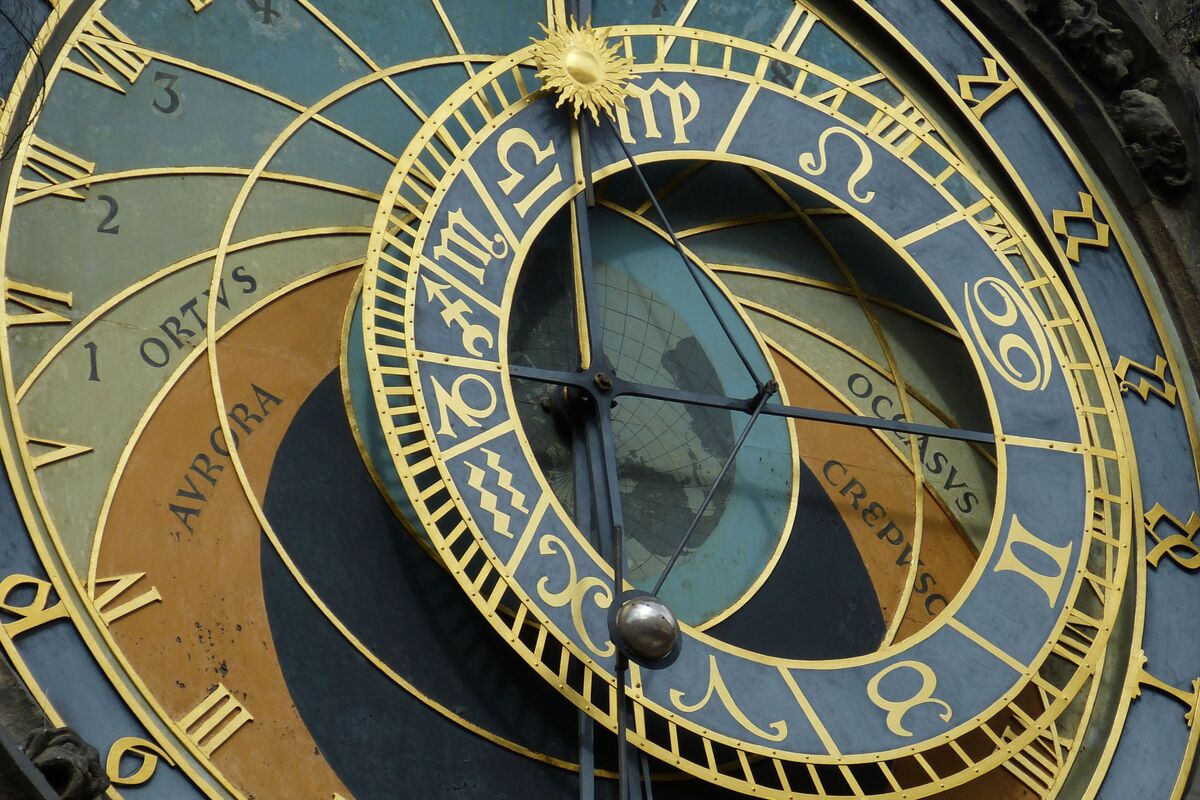
While astronomy is the science that studies the movement of the stars and star clusters, astrology tries to relate the position of the planets, sun and moon before the constellations of the zodiac and correlate them in certain behaviors and actions before the human being.
For example, a person with Mars in Aries may be impulsive and energetic, and one with Mercury in Pisces is intuitive and full of imagination.
However, there is no scientific proof that the constellations of the signs directly affect people's behavior as is claimed in astrology. That is, there is nothing that proves in a considered way that the constellations of the signs really have a relationship in the pseudoscience of astrology.
So, it's very likely that the way constellations affect the way we feel has to do with all that mythology and the beauty they splash across our starry sky!

